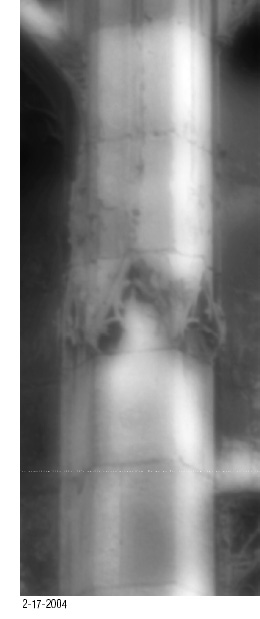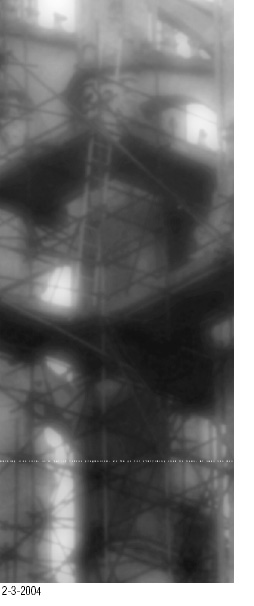Mala Gallery
8, Zamkowy Sq., Warsaw (Old Town)
March 30 - April 24, 2004
Opening: Tuesday, March 30, 6 p.m.
Tomasz Konart: „Press review”

|
THE high school teacher handed out a press review and asked us to find any inconsistencies in it. I highlighted one sentence, but wasn't able to explain why it grabbed my attention. It was a quotation from a speech by a politician. He was referring the audience to fundamental moral rights and obligations. It was the kind of statement that would be pronounced with vehemence, close to the climax of a public appearance - a well spaced set of strong words. Nevertheless it was vague enough to disable our ability to judge its truthfulness. It turned out that the teacher played a trick on us. She combined two unrelated election speeches by candidates of contending parties into one. I don’t recall anyone in the class that caught the trick. Recently, I came across that fictitious statement while browsing my old school notebook. It seems that the same phrases could be used today as a means of escaping from reality and directing our actions with emotional arguments, under the cover of offering ultimate moral choices. I also found several negative strips between the pages of the same notebook. Those were pictures of the bastions of moral judgment built back in the Middle Ages. Although they were put together with no intention, there is an almost tangible connection between the weathered walls of old cathedrals and monumentally inflated words found quite often in daily news reports. I have tried certain digital and photographic techniques to create a visual representation of my school notebook. It has become an ongoing job of “re-photographing” the environment that I was brought up in and the present, as single reality. The most exciting part of the process is to watch the equivocal text melting into the gelatin silver image of a cathedral. Tomasz Konart, 2004 |
 |

 |
NEVER before information had such a great meaning as it has today. Especially now, in times of rapid, unforeseeable changes and unexpected events. Some say that in the future we’ll have to relay only on random recordings of these events and that we’ll never have the complete image of what happened. It is in a sense also a problem of photography. All attempts to create a synthetic description of the world by the means of photographic medium always ended halfway. Tomasz Konart presents us his own subjective reflections upon it. Using digital techniques he is „re-photographing“ the world he was raised in and his present environment as contiguous entireties. He places on fragments of a medieval cathedral laconic press communiqués and quotations from political addresses. But can the text from the press communiqués disturb the already determined order? Will it, after years, convey the same feelings and emotions or will it remain only a graphic form put on the image of a noble building from the past? And perhaps the passing time will make the text ambiguous and the image will serve only to invoke purely aesthetic feelings deprived of dramatic character of the moment? We haven’t, at least now, simple answers to these questions. And maybe we won’t have them at all.
M. G. |

Tomasz Konart
born 1955 in Warsaw
lives in Toronto
Academic preparation
1975-80: National School of Film Theater and TV, £ód, Poland
1999: B.A.A. in New Media, Ryerson University, Toronto, Canada
tomaszkonart.5tk.net
Earlier in FOTOTAPETA:
In FOTOTAPETA also:
Copyright © 1997-2025 Marek Grygiel / Copyright for www edition © 1997-2025 Zeta-Media Inc.